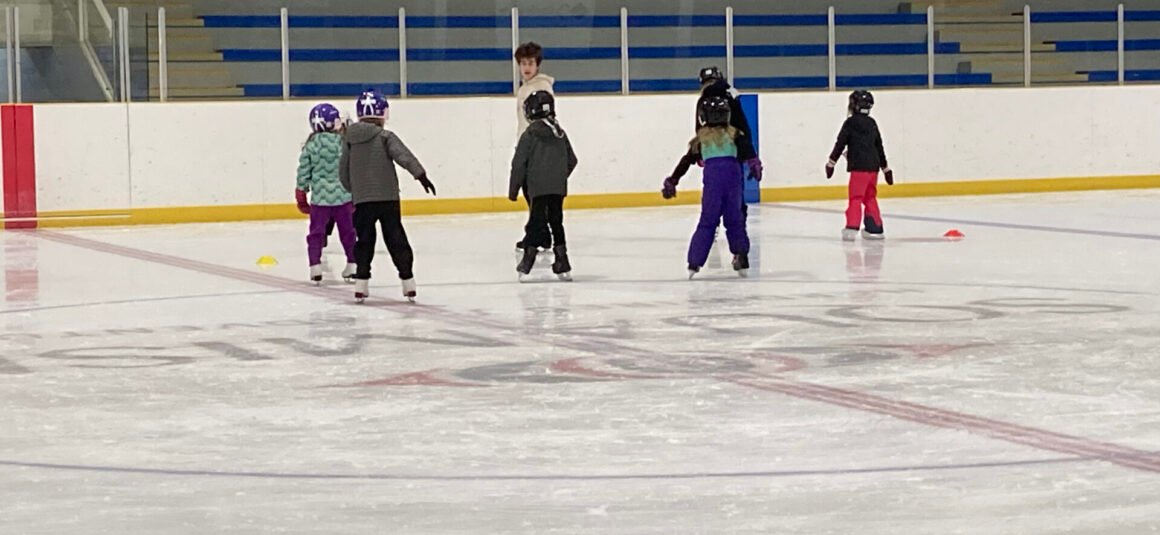
In a meeting on Oct. 7, Kari-Ann MacDonald, head coach of Skate Sea2Sky, appealed to council members to take action on the lack of ice access in the area.
The rink, which reopened on Sept. 22, was closed due an issue with humidity resulting from renovations at the Brennan Park Recreation Centre, which made the ice unsafe for use.
In addition to income loss at the club, MacDonald said the coaches have been facing financial hurdles. This has also led families to move away from ice skating and explore other sports.
“We have paid coaches. None of us get paid unless we’re working, which is starting to financially hurt some of us as we go along. Families are also frustrated.”
MacDonald said while she was able to get two weeks of training at the Whistler Skating Club for competitive training, no other places in the area could take them as they were turned away “left right and centre.” She added that registration for the program is significantly dropping, with them having to refund memberships.
“I know you’re dealing with problems but now we’re having to deal with more loss of ice, more training time.”
“We query why some of this wasn’t dealt with while the closure was happening,” MacDonald asked the council.
This has had a significant impact on those who ice-skate with players having to travel to other places for training. This has led to environmental impacts like increased carbon emissions in addition to stress on families and kids to travel during busy times in terms of tourism in the area.
While the sport is a year-long commodity, ice is often removed from the rink during summer months causing challenges for those competitively training in the sport.
“This of course impacted us hugely through September, but it also impacted us through the summer. We have no option for ice in this town because we historically choose to take it out,” MacDonald said.
The program attracts people between the ages of two to 69 years.
She added that the sport has expanded to 30,000 people, which is an increase from past years and that the demand for the program is due for necessary action from the council.
“I’ve been in this community for 33 years,” MacDonald said. “One of the arguments way back when we got pushed away from council, we were told until the town reached 20,000 people, there was no need for a second sheet of ice and wouldn’t be considered. Here I stand before you — we are hitting the 30,000 mark.”
MacDonald said that the club has started concessions to allow people to join and make up for practice on an extra day. “On top of that now we have two more closures coming up after Thanksgiving. And that was one of the frustrating things — we were closed for 3 weeks.”
“The lack of local access also limits our youth participation, affordability, and community connection,” she said. “Because of all of this, we do feel that the kids get a little bit disjointed, pushed aside, and there’s more separation. That mainly stems from some of the families (not being able to) work out traveling. So, they are only stuck with training from here.”
Some solutions MacDonald offered included allowing community groups to support the program by setting up a private funding partnership framework, extending the ice season to help programs recover and maintain competitiveness.
“I saw promises back in 2016 when we started doing the new look to the ice rink. There was hope brought back in. It looked like by 2028 we’d be sitting with another whole new rec center. And here I stand in front of you in 2025 with nothing.”
The closure of the ice rink had previously received flak from locals calling to a lack of youth sports in the community after the District of Squamish had shut down the arena early last month. The sole sheet of ice in the community had left several competitive skaters without a facility to practice.
Councillor Jenna Stoner said that while the council is in the middle of the budget process, they have prioritized critical faculties like fire halls and other public works facilities. However, the next layer of investments is focused on sustaining community-based infrastructure like the rec centre.
“I’m looking forward to being able to have those conversations now that we have some of those critical facilities up built and running,” she said.
Stoner added that she is looking forward to building a capital plan with staff and providing a pathway for the community on how they can show up and participate in the fundraising needed to make the plan a reality. Councillor Chris Pettingil said one of the criticisms was that there was no “realistic” solution to the problem.
“I think unfortunately uh historically we built up some expectations that when we did our facilities master plan which understood there’s a huge infrastructure deficit in our community as well as every other community and some critical things that we needed to address.”
“The reality is the grants that were available really restricted how we could spend it.”
Councillor Lauren Greenlaw said that budgetary constraints have prevented expanding recreation facilities. Due to increases in taxation she suggested organizing hockey groups for fundraising.
“I think that there is no lack of desire around this table to expand our recreation facilities. The fact of the matter is the budgetary constraints that we face.”
“The primary issue is available funds. Our tax base is already struggling with the increases in taxation that we’ve experienced and the foreseeable ones in the future,” Greenlaw said.




Comments